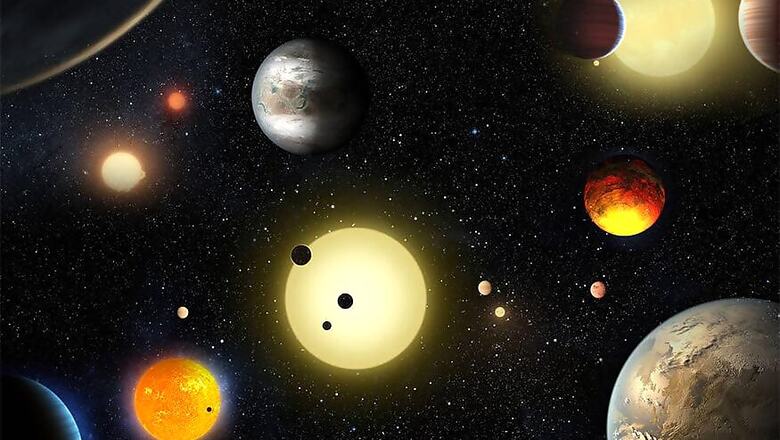
views
In a first, researchers have found evidence of planetary debris surrounding a double sun that resembles Tatooine -- Luke Skywalker's home world in the "Star Wars" film.
A scene in "Star Wars", where Skywalker looks at the horizon with the setting of two suns is regarded as one of the most iconic images in cinema.
In a study published in the journal Nature Astronomy, the researchers described the remains of shattered asteroids orbiting a double sun consisting of a white dwarf and a brown dwarf roughly 1000 light-years away in a system called SDSS 1557.
The debris appears to be rocky and suggests that terrestrial planets like Tatooine might exist in the system, according to the researchers.
"With the discovery of asteroid debris in the SDSS 1557 system, we see clear signatures of rocky planet assembly via large asteroids that formed, helping us understand how rocky exoplanets are made in double star systems," said lead study author Jay Farihi from University College London.
Also read: Xiaomi Launches Xiaomi Mi 5C With In-House 'Surge S1' Processor
To date, all exoplanets discovered in orbit around double stars are gas giants, similar to Jupiter, and are thought to form in the icy regions of their systems.
In contrast to the carbon-rich icy material found in other double star systems, the planetary material identified in the SDSS 1557 system has a high metal content, including silicon and magnesium.
These elements were identified as the debris flowed from its orbit onto the surface of the star, polluting it temporarily with at least 1.1 trillion tonnes of matter, equating it to an asteroid at least four km in size.
"Building rocky planets around two suns is a challenge because the gravity of both stars can push and pull tremendously, preventing bits of rock and dust from sticking together and growing into full-fledged planets," Farihi said.
The team studied the binary system and the chemical composition of the debris by measuring the absorption of different wavelengths of light or 'spectra', using the Gemini Observatory South telescope and the European Southern Observatory Very Large Telescope, both located in Chile.
Also read: Moto G5 First Look Video at MWC 2017: Great Design But Pricing Will be The Key Factor
(Follow MWC 2017 Full Coverage Here)


















Comments
0 comment